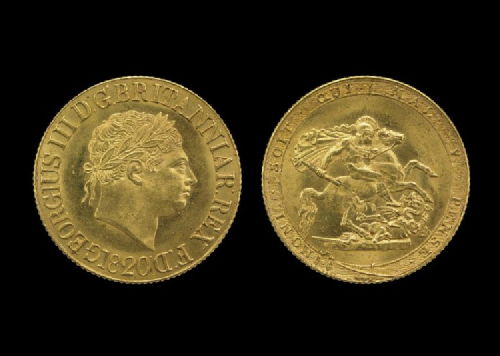All 1 entries tagged Elgin Marbles
No other Warwick Blogs use the tag Elgin Marbles on entries | View entries tagged Elgin Marbles at Technorati | There are no images tagged Elgin Marbles on this blog
June 11, 2014
Entangled Objects, British Nationalism and the Elgin Marbles
 |
| Sovereign of George III |
Over the last week or so I have been doing a lot of thinking about the role that images and material objects play in constructing identities, communities, empires and nations. A more modern example that I think demonstrates the sort of phenomenon we might also look for in the ancient Roman world is the Elgin marbles, the parthenon frieze taken from Athens to London by Lord Elgin at the beginning of the nineteenth century.
Few people realise I think (and I didn't until last week) that when the marbles arrived, the British government believed they were worthless, and refused to buy them (a good cartoon demonstrating the general sentiment can be found here). Lord Elgin and his friends thus had to wage something of a publicity campaign to ensure that his investment would pay off, a campaign that was apparently waged from Elgin's backyard shed, where the marbles were temporarily housed. But what it interesting is that the marbles arrived just as Britain was attempting to articulate its identity as a nation and as an Empire, and the marbles became an object that featured in these discussions. Since the images on the parthenon marbles are a bit ambiguous (there is still discussion over their exact meaning), people could see in the marbles differing ideas of British identity: British masculine superiority, the power of the British war machine, the idea of elite cavalry, the British male body, and the fact that the marbles were monochrome meant that they could even be used to discuss ideas of white superiority. (An excellent discussion of all of this can be found in Rose-Greenland, F. (2013). "The Parthenon marbles as icons of nationalism in nineteenth-century Britain." Nations and Nationalism 19: 654-673.)
What I find interesting is how these particular objects played an active role in forming British identity, and that the formation of this ideas took place not in the government, but among the elite (Elgin and his friends). Moreover, when a new coin design was introduced under George III in 1818 (for the earlier coinage design see here), the marbles served as direct inspiration. The Greek imagery, however, has been adapted to its British context in that the Greek-style figure is now slaying a dragon, a reference to St. George. These objects then, brought from outside Britain, played an active role in forming British identity and, in the end, epitomised a new idea of Britain on a new style of coinage (tellingly called 'a sovereign'). The question is, why did the marbles act in this way, out of ALL the objects that came into London in this period? I wonder if it has something to do with the ambiguity of the imagery of the marbles, meaning that they were susceptible to multiple meanings and interpretations in a way that other objects were not. (I have, of course, blogged on ambiguity before).The Elgin marbles also raises the question as to how other 'entangled objects' may have influenced the formation of Roman identity, and, ultimately, the design of coinage under Roman dominion. And, given the ongoing discussion over British identity in the modern day, it makes me wonder what will be chosen for the new British one pound coin.
(Image above is © The Trustees of the British Museum. See the coin online here.)
 Clare Rowan
Clare Rowan

 Please wait - comments are loading
Please wait - comments are loading

 Loading…
Loading…

